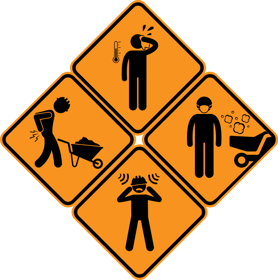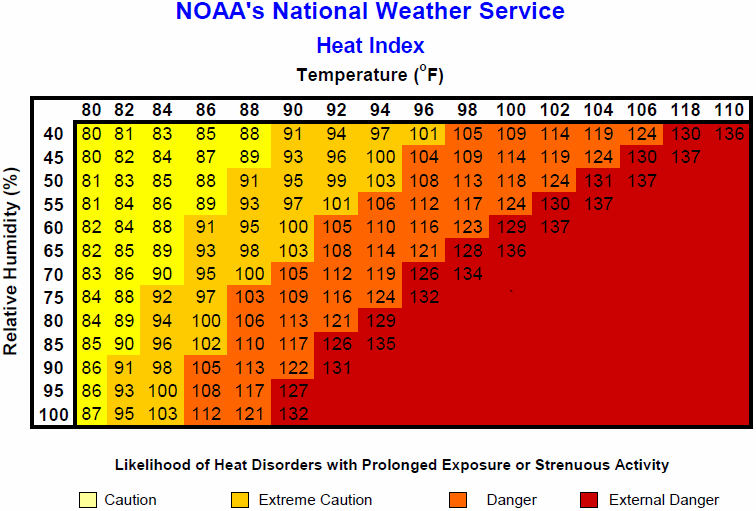
Health risks are just as important as safety risks. Even though we may pay more attention to the instantaneous consequences of falling from heights or electrocution, construction industry health hazards can result in comparably detrimental effects on both lives and businesses. Despite taking longer periods to manifest, oftentimes invisibly, continual exposure to health hazards over the course of employment is known to cause career-ending chronic pain, physical disabilities or even premature death.
In order to get ahead of the next generation of health hazard-related cases, the American Industrial Hygiene Association (AIHA) Construction Committee has just released their new Focus Four for Health guidance document on the four most important health hazards facing construction industry workers today. Created by a committee of industrial hygienists using the best data available, these guidelines are intended to help construction contractors better understand and prepare for the health risks facing employees and businesses on a daily basis, many of which go under-addressed due to the delay between exposure and symptoms.
The bottom line: there’s more than likely something you can and should be doing about health hazards on your worksite. With the right information and a proactive plan following the AIHA guidelines, these construction industry health hazards can likely be mitigated or outright prevented. For those ready to take preventive measures, you’ll need to brush up on the following four construction health hazards to ensure the long term well-being of your organization:
1. Manual Material Handling
The first health risk on the AIHA list comes from manual material handling. As part of the job, construction workers are expected to lift, pull, and carry heavy materials to complete tasks on site. This work is commonly performed in positions that push workers’ muscles to the limit, such as overhead or low to the ground construction. Years of bending, reaching and contorting with the weight of heavy tools can cause serious musculoskeletal disorders which affect the back, neck and joints. While these problems manifest in sprains and bruises in the short term, the career-ending, chronic pain associated with musculoskeletal disorders often initiates a spiral of cascading effects, including but not limited to painkiller abuse and/or addiction.
To help you navigate risk factors and prevent such damage from occurring, the AIHA has come up with an acronym:W-H-A-T PACE. Consider how much Weight your workers are moving at a time, how difficult materials are to Handle, whether or not moving materials put people in Awkward postures, the amount of Time workers are taking to move items from A to B, and at what PACE they are moving -- more loads at higher weights over longer periods of time means more risk. If you find your employees are frequently carrying heavy items in awkward positions, an investment in tools like dollies and cranes could save valuable team members from injury or an early retirement.
2. Noise
We often associate noise with positive things like music and podcasts, but sound can easily reach dangerous levels before we realize it’s causing us damage. In fact, we risk incurring hearing loss every time we experience over 85 decibels for extended periods of time -- which is an important number considering construction industry tools and machines frequently operate at or above this level. On the other side of the spectrum, exposure to over 130 decibels can result in instantaneous damage. Unfortunately, hearing cells do not repair once damaged, meaning that construction industry professionals have a responsibility to protect themselves and their coworkers from workplace noise that can be hazardous to one’s health.
The AIHA suggests that current 90 dBA standards imposed by OSHA -- now half a century old -- should be updated with new metrics. They believe that the 85 dBA figure from NIOSH (The National Institute for Occupational Safety and Health) is a better limit for employers to begin providing protective equipment. If your jobsite produces noise in this range, we recommend looking at the AIHA document for a complete breakdown on how to calculate noise hazard risk per dBA-level, and the effects preventative equipment like headphones and earplugs have on that risk.
 (Exposure to just 85 dBA over an entire shift can cause irreversible damage.)
(Exposure to just 85 dBA over an entire shift can cause irreversible damage.)
The good news is that reducing noise emissions can also be a competitive advantage that’s good for business. Companies working in areas where noise is a problem, such as urban environments or residential neighborhoods, can utilize noise-conscious equipment investments to make a more attractive offer. The next time you’re buying used heavy equipment on IronPlanet, factor in the noise level with your purchasing decision to save your ears and up your game!
3. Air Contaminants
Dust, vapors, fumes and exhaust are the byproducts of much of the work performed by construction industry professionals. The equipment, materials and machines that are used to complete tasks are prone to releasing these air contaminants which, over time, can absolutely cause ailments. Respiratory diseases are common for those exposed to such particles through inhalation, resulting in asthma, COPD, fibrosis and cancer.
Those looking to protect their workforce should consider the toxicity of materials and the duration workers will be in proximity. In particular, enclosed environments are locations which may cause contaminants to build up especially high. Investments in protective gear, high-quality equipment, and workforce management can help to both reduce the total amount of toxic materials being released on your jobsite and the amount of time your employees will be exposed.
4. High Temperature
It’s easy to tell when it’s hot outside. Determining how hot it is inside your body or the bodies of your workers is much less obvious. If left unchecked, high temperatures can lead to hazards like heat stroke, heat exhaustion, heat rash and heat syncope, which have the ability to cause a wide range of symptoms including fainting, seizures, rashes and cramps. These issues are only amplified on busy worksites where a single slip or miscalculation can cause injury or death.
Simple precautions like providing shade can make a huge difference in ensuring the health of your employees facing high temperatures. For example, providing adequate water and rest/shade areas goes a long way to mitigate the risks. Perhaps the best way to be prepared is to check the upcoming weather forecasts. By comparing data with the NOAA National Weather Service heat index, you can determine the likelihood of heat disorders and prepare accordingly.
 (Make sure your team has protection for when things get hot and humid!)
(Make sure your team has protection for when things get hot and humid!)
Ready to invest in protective gear for your company? Visit IronPlanet.com to browse all the medical supplies and construction equipment for sale you’ll need to keep your team happy and healthy, including heating and cooling equipment, tents, and mini excavators.



